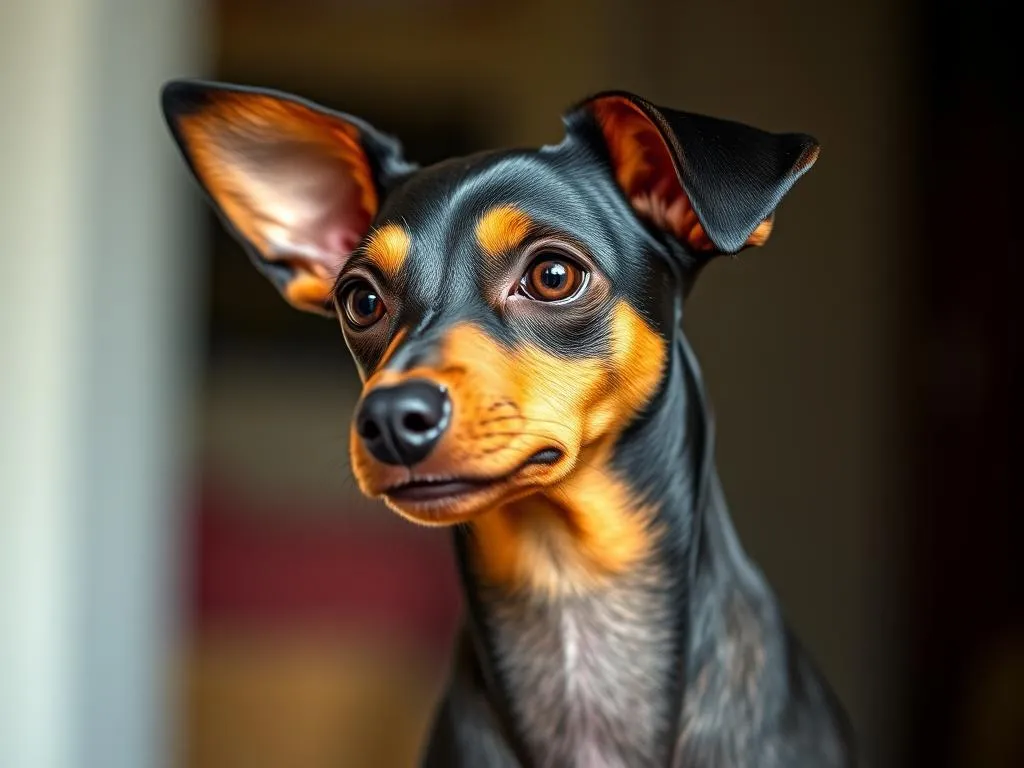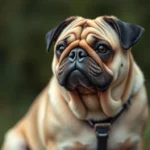
Introduction
When it comes to pet ownership, understanding various dog breeds is essential. Each breed has unique characteristics, temperament, and care requirements that can significantly influence the experience of pet ownership. Among the myriad of breeds, the Miniature Pinscher stands out as a particularly fascinating and popular choice. Known for its spirited personality and striking appearance, this breed captures the hearts of many dog lovers.
In this article, we will delve into the details of the Miniature Pinscher, exploring its characteristics, care needs, and overall suitability as a pet.
Understanding Dog Breeds
Definition of Dog Breeds
A dog breed is a specific group of domestic dogs that share common characteristics, including behavior, appearance, and genetic traits. These traits have been developed over generations through selective breeding, and they play a crucial role in determining how a dog behaves, looks, and interacts with humans and other animals. The importance of understanding dog breeds cannot be overstated, as it helps potential owners choose a companion that fits their lifestyle and preferences.
Classification of Dog Breeds
Dog breeds are typically categorized into groups based on their purpose and traits. Common classifications include:
- Working Dogs: Bred for tasks such as guarding, pulling sleds, and search-and-rescue.
- Herding Dogs: Used for managing livestock and herding animals.
- Toy Dogs: Small breeds often kept for companionship.
- Sporting Dogs: Bred for activities like hunting and retrieving.
Recognized kennel clubs, such as the American Kennel Club (AKC), have established official breed groups that help prospective owners understand the characteristics and needs of various breeds.
Overview of Miniature Pinscher
History and Origin
The Miniature Pinscher is often mistakenly referred to as a miniature version of the Doberman Pinscher, but it is, in fact, a distinct breed with its origins tracing back to Germany. This breed was developed in the early 20th century to serve as a ratter, keeping homes and farms free of vermin. Its lineage includes several breeds, such as the Dachshund, Italian Greyhound, and the German Pinscher.
Despite its diminutive size, the Miniature Pinscher has always been a confident and spirited breed, earning the nickname “King of the Toys.” It has been enjoyed as a companion dog and has gained popularity worldwide for its lively demeanor.
Physical Characteristics
The Miniature Pinscher is a small breed, typically standing between 10 to 12.5 inches tall at the shoulder and weighing around 8 to 12 pounds. Its sleek, muscular body is complemented by a short coat that requires minimal grooming. Common coat colors include:
- Black and rust
- Chocolate and rust
- Red
- Blue and rust
The breed is known for its distinctive features, such as its high-stepping gait and alert expression. The ears can be cropped or left natural, and the tail is often docked, although this practice is becoming less common.
Temperament and Behavior
The Miniature Pinscher is known for its energetic and playful personality. These dogs are often described as spirited, curious, and fearless. They tend to be highly affectionate with their families but can also exhibit a strong guarding instinct, making them effective watchdogs.
While they are loyal companions, Miniature Pinschers can also be quite stubborn, which may pose challenges during training. Their lively nature often leads to barking, so early training and socialization are crucial to managing this behavior.
Health Considerations
Common Health Issues
Like all breeds, the Miniature Pinscher is prone to specific health problems. Some common issues include:
- Hip Dysplasia: A genetic condition where the hip joint doesn’t fit properly into the hip socket.
- Patellar Luxation: A condition where the kneecap dislocates, causing pain and mobility issues.
- Progressive Retinal Atrophy: An eye disorder that can lead to blindness.
Regular veterinary check-ups and vaccinations are essential to maintain the health of your Miniature Pinscher and catch any potential issues early.
Lifespan and Care
The average lifespan of a Miniature Pinscher ranges from 12 to 16 years, making them a long-term commitment for pet owners. Preventive care is crucial, including:
- Regular veterinary visits
- Vaccinations
- Dental cleanings
- Parasite control
By following a comprehensive care plan, you can help ensure your Miniature Pinscher lives a long and healthy life.
Training and Socialization
Basic Training Techniques
Training a Miniature Pinscher can be both rewarding and challenging. Positive reinforcement is the most effective training method for this breed. This involves rewarding desired behaviors with treats, praise, or playtime, which encourages the dog to repeat those behaviors.
Consistency is key when training a Miniature Pinscher. Short, frequent training sessions tend to work best, as these dogs have short attention spans. Patience is also essential, as stubbornness is a common trait in this breed.
Socialization Needs
Early socialization is critical for the Miniature Pinscher. Exposing your puppy to various environments, people, and other animals helps them develop into well-adjusted adults. This can reduce the likelihood of fear-based behaviors and excessive barking.
Consider enrolling your Miniature Pinscher in puppy classes or arranging playdates with other dogs. Gradually introducing them to different situations will help them adapt and feel comfortable in diverse settings.
Exercise and Activity Requirements
Daily Exercise Needs
The Miniature Pinscher is an active breed that requires regular exercise to stay healthy and happy. Generally, they need at least 30 to 60 minutes of exercise each day. This can include walks, playtime, or engaging in agility activities.
Activities such as fetch or tug-of-war are excellent ways to burn off excess energy. Keep in mind that these dogs thrive on mental and physical stimulation, so varying their routine is essential.
Mental Stimulation
In addition to physical exercise, Miniature Pinschers need mental engagement to prevent boredom and destructive behaviors. Interactive toys, puzzle games, and training exercises can provide the mental stimulation they crave.
Consider incorporating activities that challenge their intelligence, such as scent games or obedience training. These types of exercises keep their minds sharp and help strengthen the bond between you and your dog.
Living with a Miniature Pinscher
Ideal Living Environment
The Miniature Pinscher is adaptable and can thrive in various living conditions, whether in a house or an apartment. However, they do best in an environment where they can receive ample exercise and attention.
This breed is generally good with families, singles, and seniors, but they require supervision around very young children due to their small size and energetic nature. Their alertness and loyalty make them excellent companions for various lifestyles.
Care and Maintenance
Grooming a Miniature Pinscher is relatively easy due to their short coat. Regular brushing will help reduce shedding, and occasional baths will keep them clean. Pay attention to their ears, teeth, and nails, ensuring they are well-maintained.
In terms of diet, high-quality dog food that meets their nutritional needs is essential. Consult with your veterinarian for dietary recommendations, especially considering factors such as age, weight, and activity level.
Pros and Cons of Owning a Miniature Pinscher
Advantages
Owning a Miniature Pinscher comes with numerous benefits:
- Companionship: Their affectionate nature makes them loyal companions.
- Watchdog Abilities: Their alertness and barking can deter intruders, making them effective watchdogs.
- Adaptability: They can thrive in various living situations, from apartments to homes with yards.
Challenges
However, potential owners should also consider the challenges:
- Stubbornness: Training may require extra patience and consistency.
- Barking: They are prone to barking, which may not be suitable for all living situations.
- High Energy: They need regular exercise and mental stimulation to prevent boredom.
These factors are essential for first-time dog owners to consider before bringing a Miniature Pinscher into their home.
Conclusion
The Miniature Pinscher is a vibrant and spirited breed that offers companionship and joy to its owners. Understanding its key traits, care requirements, and potential challenges is crucial for ensuring a successful and fulfilling relationship.
If you believe the Miniature Pinscher aligns with your lifestyle and preferences, it’s worth delving deeper into research and connecting with reputable breeders or rescue organizations. This breed can bring immense joy and loyalty into your life, making it a wonderful addition to any home.









